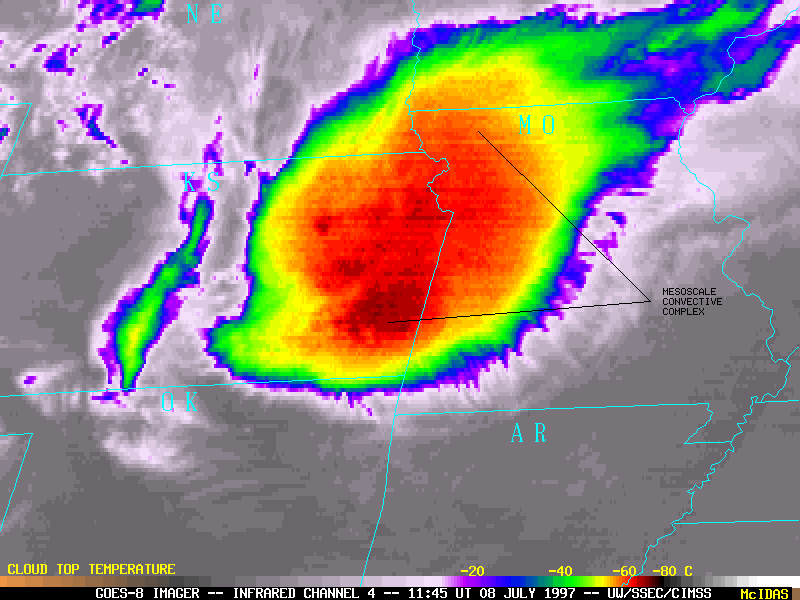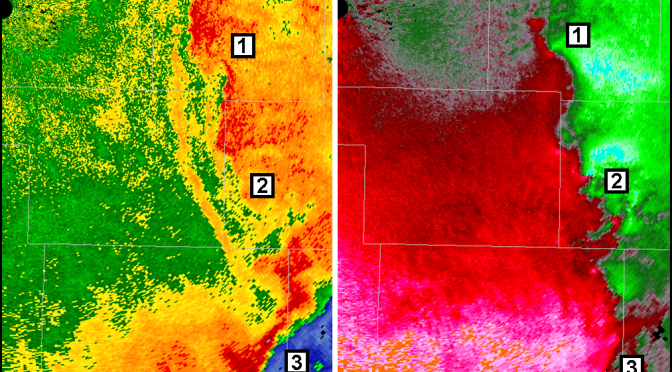Mesoscale Convective Systems (MCS) and Mesoscale Convective Complex (MCC)
Mesoscale convective systems (MCSs) refer to all organized convective systems larger than supercells. A MCS consists of multiple thunderstorms that produce a contiguous horizontal precipitation area on the order of 100 km or more in at least one direction. Special cases of mesoscale convective systems are squall line and Mesoscale convective complex (MCC). In addition to the severe weather produced by any given thunderstorm cell within the MCS, the systems can generate large areas of heavy rain and/or damaging winds. This means they may cause hazards by flooding, lightning and wind.
This unit covers the dynamics of these systems that result from the interaction of the thunderstoms covered early. MCS differ from supercells, however, supercells may be embedded.
Learning goals
After completion of this units, students will be able to
- Define, describe and distinguish MCS and MCC
- Classify squall lines
- Explain the formation mechanism of MCS and MCC
- Explain the maintenance mechanisms of squall lines
- Discuss the movement of squall lines
- Classify the six types of rain-bands of squall lines

Student tasks
- Watch this video on MCS
- Watch this video on MCC
- Read this discussion of a MCS case (Graduate students)
- All students: Read chapter 9 to 9.2.2 (included) in Lin, Mesoscale Dynamics
- Take this quiz (all students)
- Graduate students: Solve the problems in this Unit 11 application task sheet, scan your results and submit them to cmoelders@alaska.edu by Thursday 2359 AKST.
Supplemental material (optional)
Great page discussing MCC and bow echos
UCAR COMET program 2002 Comet learning material on MCCs
Supplemental reading (optional)
Johns, R.H., 1993: Meteorological conditions associated with bow echo development in convective storms. Wea. Forecasting, 8, 294-299.
Businger, S and T. Birchard Jr., 1998: A bow echo and severe weather associated with a Kona Low in Hawaii. Wea. Forecasting, 13, 576-591.
AMS, 2001: Severe Convective Storms, Monographs, Chapter 12.
Maddox, R. A., 1983: Large-Scale Meteorological Conditions Associated with Midlatitude, Mesoscale Convective Complexes. Mon. Wea. Rev., 111, 1475-1493.
Przybylinski, R.W., 1995: The bow echo: Observations, numerical simulations, and severe weather detection methods. Wea. Forecasting, 10, 203-218.
© 2020 Nicole Mõlders | All rights reserved
